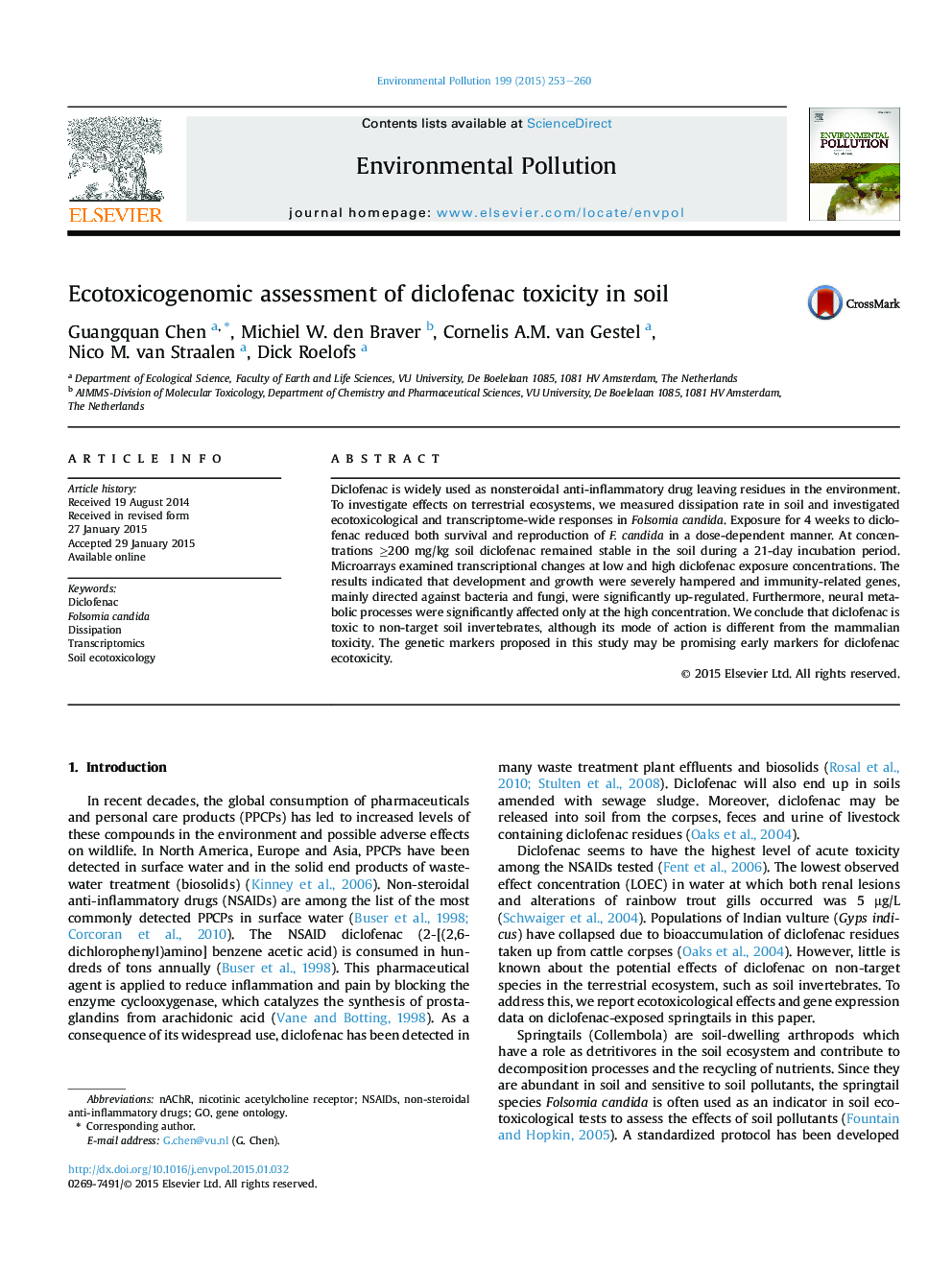| Article ID | Journal | Published Year | Pages | File Type |
|---|---|---|---|---|
| 6316978 | Environmental Pollution | 2015 | 8 Pages |
Abstract
Diclofenac is widely used as nonsteroidal anti-inflammatory drug leaving residues in the environment. To investigate effects on terrestrial ecosystems, we measured dissipation rate in soil and investigated ecotoxicological and transcriptome-wide responses in Folsomia candida. Exposure for 4 weeks to diclofenac reduced both survival and reproduction of F. candida in a dose-dependent manner. At concentrations â¥200 mg/kg soil diclofenac remained stable in the soil during a 21-day incubation period. Microarrays examined transcriptional changes at low and high diclofenac exposure concentrations. The results indicated that development and growth were severely hampered and immunity-related genes, mainly directed against bacteria and fungi, were significantly up-regulated. Furthermore, neural metabolic processes were significantly affected only at the high concentration. We conclude that diclofenac is toxic to non-target soil invertebrates, although its mode of action is different from the mammalian toxicity. The genetic markers proposed in this study may be promising early markers for diclofenac ecotoxicity.
Keywords
Related Topics
Life Sciences
Environmental Science
Environmental Chemistry
Authors
Guangquan Chen, Michiel W. den Braver, Cornelis A.M. van Gestel, Nico M. van Straalen, Dick Roelofs,
